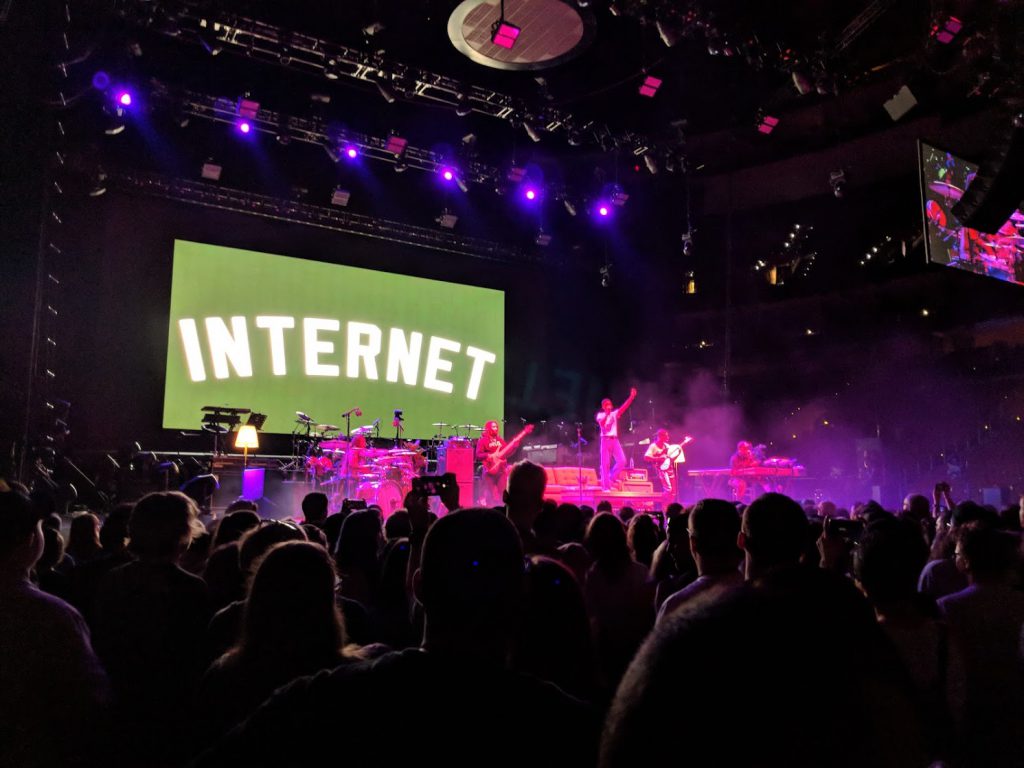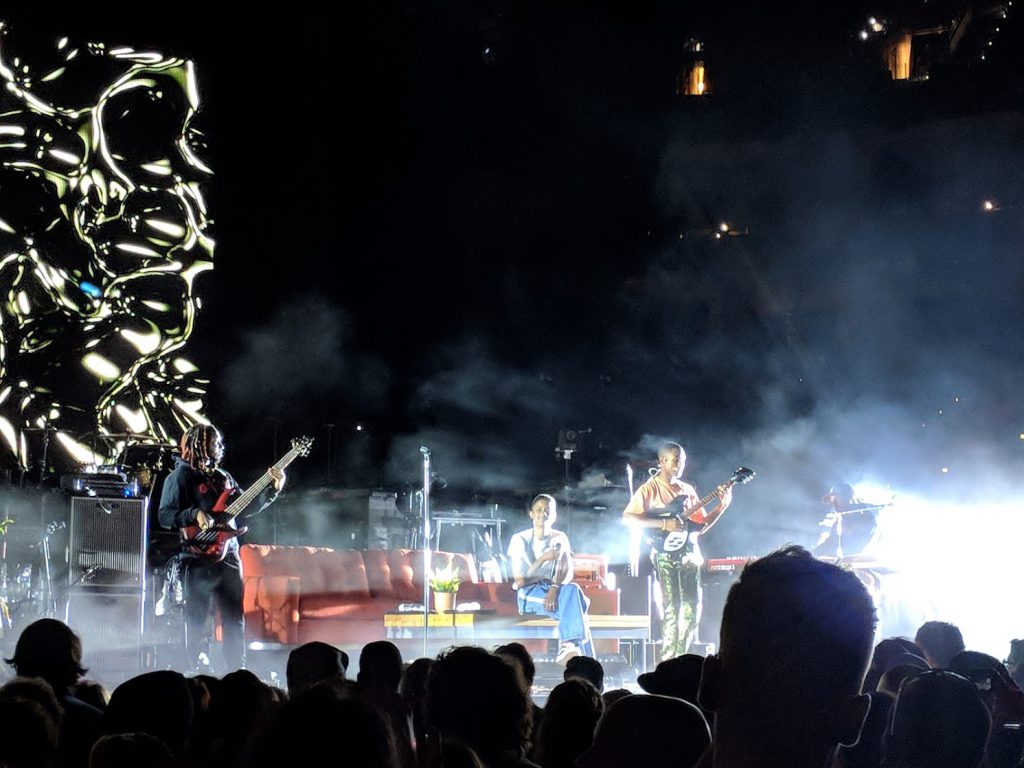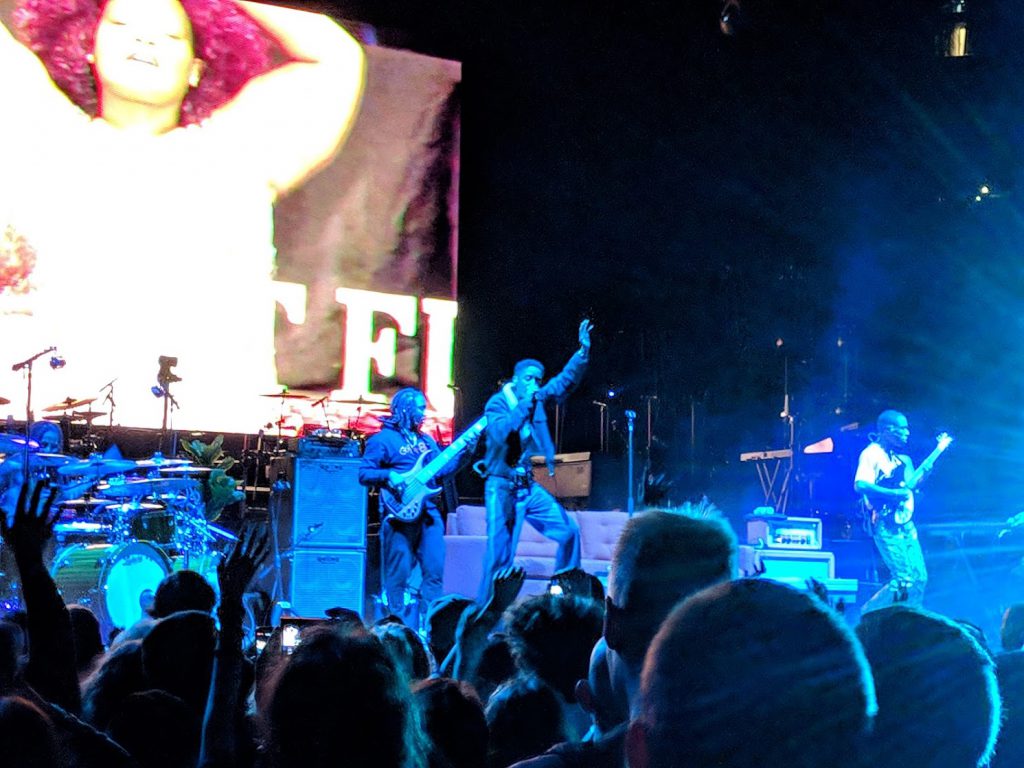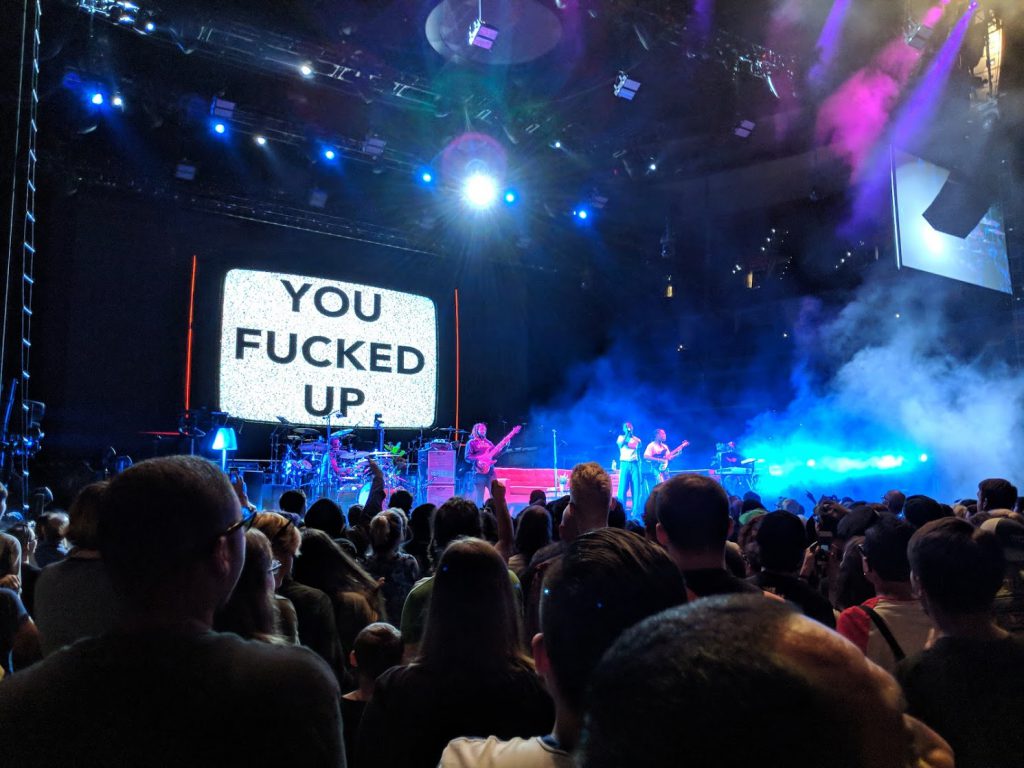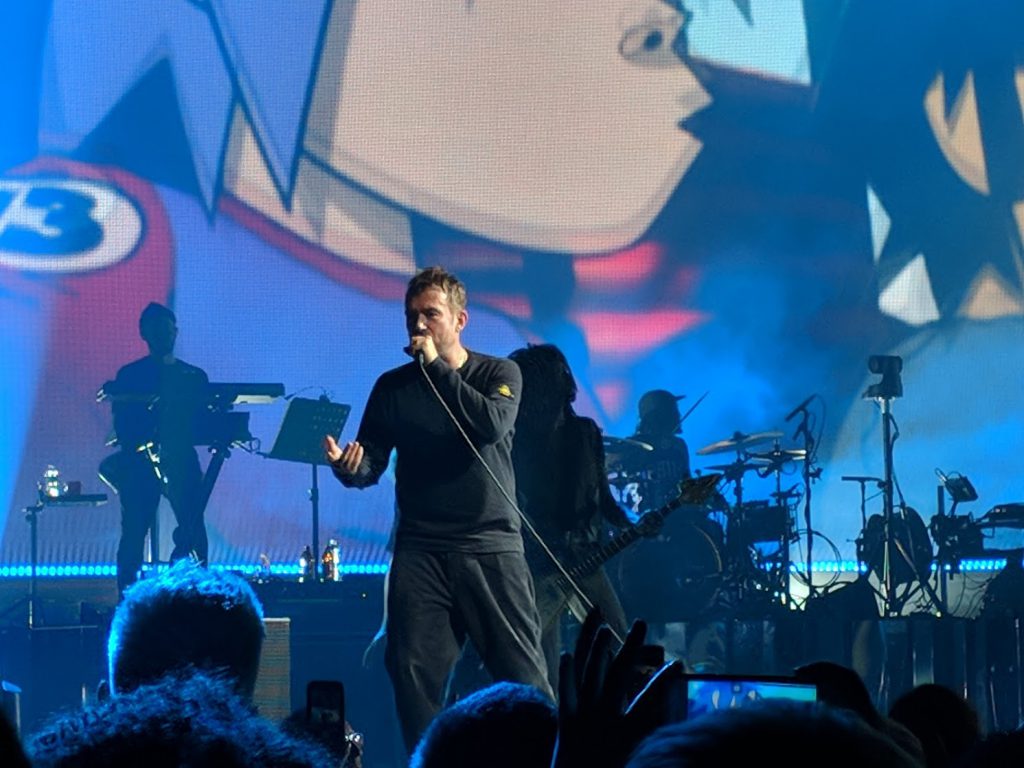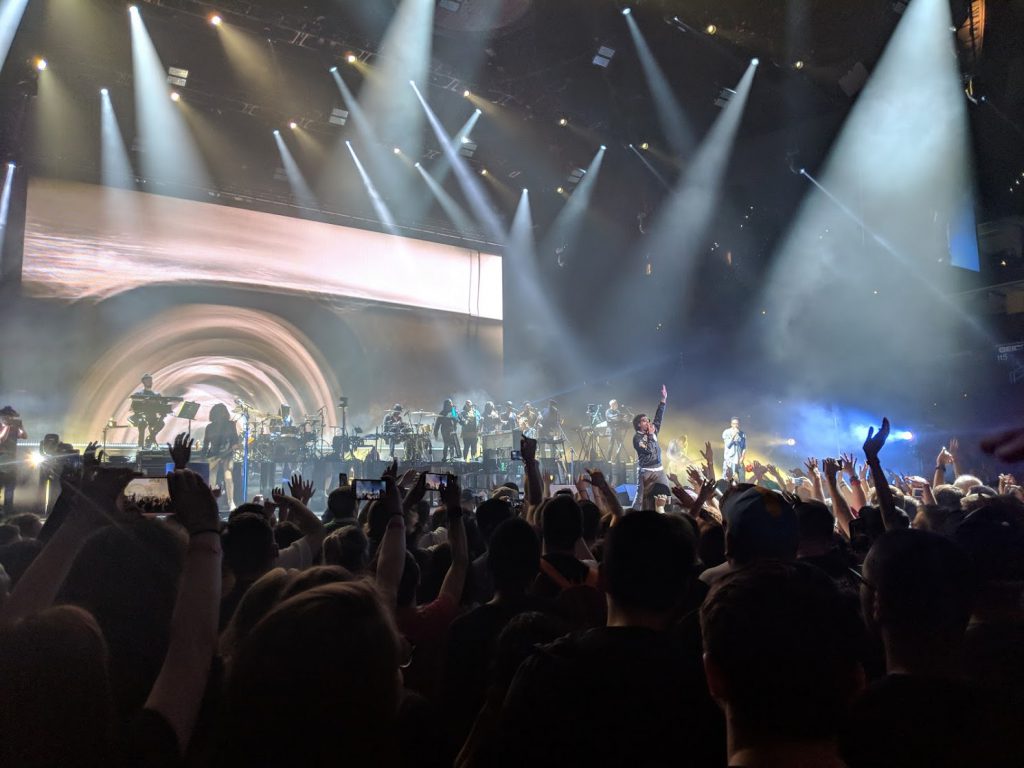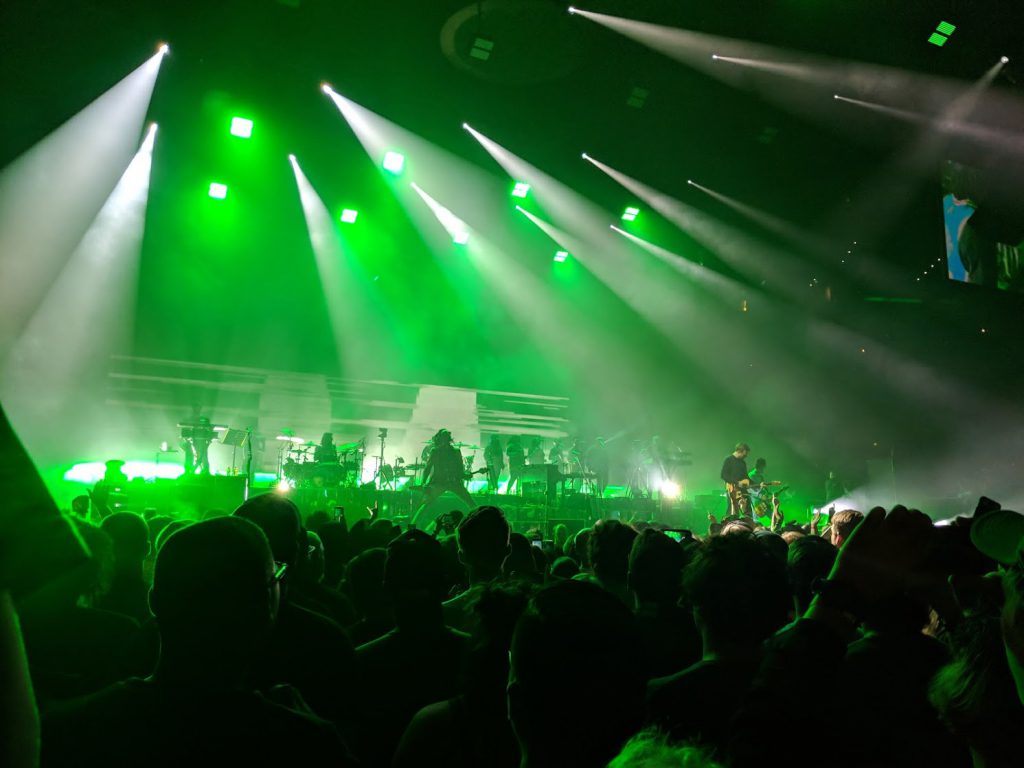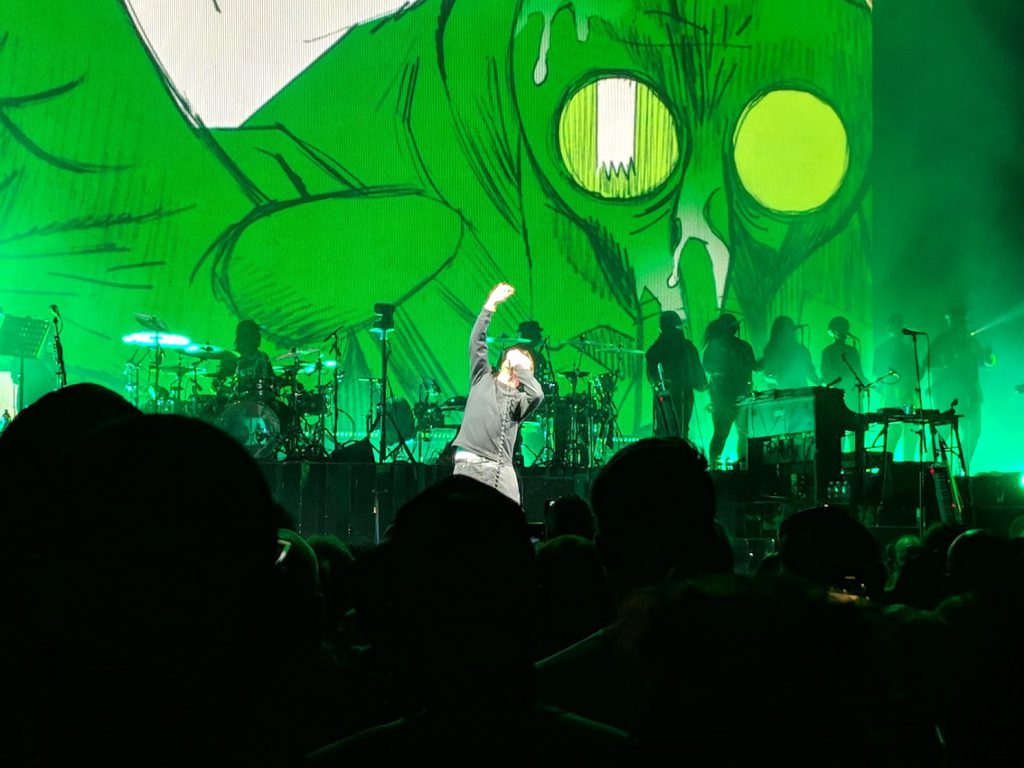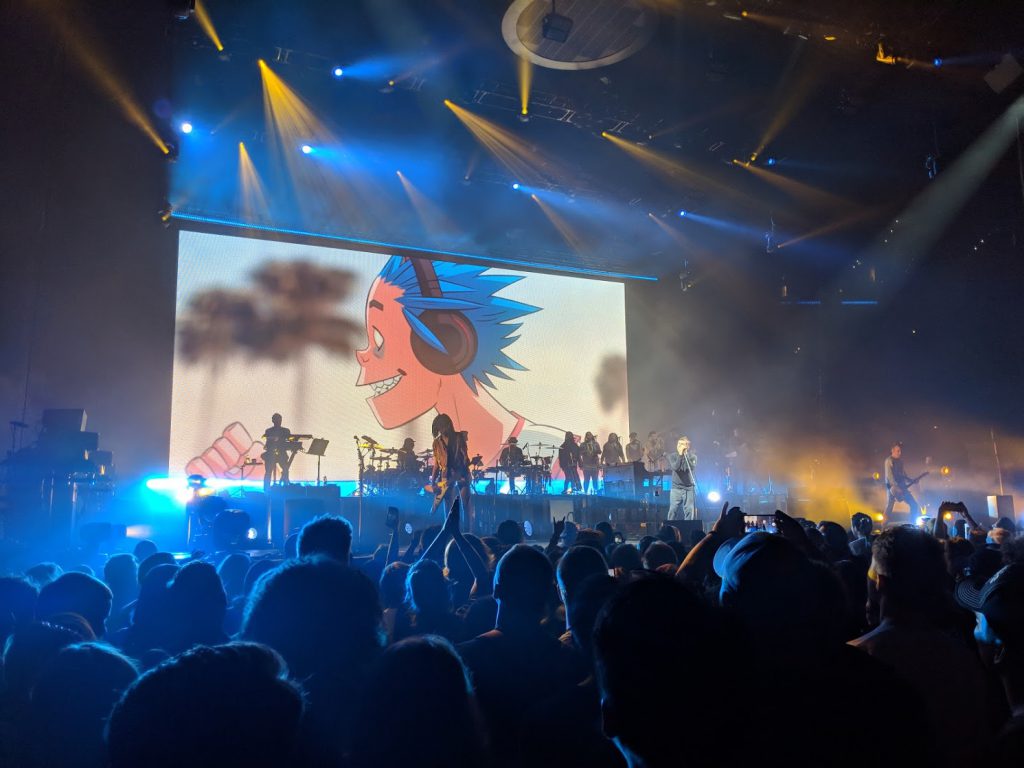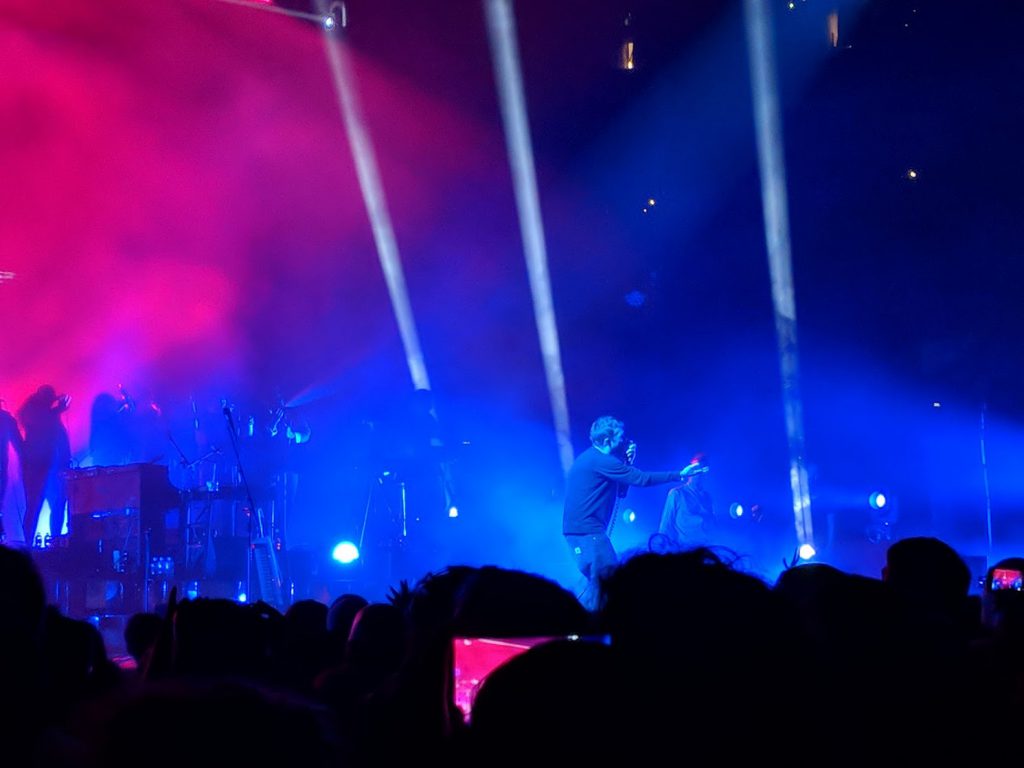Gorillaz, more than ever, are an entity. At Wells Fargo Center, the collaborative and elusive nature of the virtual band became more apparent than I had realized, especially as a recent convert to the Church of 2D, Russell, Noodle, and Ace (formerly Murdoc). Damon Albarn, for all intents and purposes the core of the band, was at his highest, but more often than not was best felt when taking a back seat. The concert was also a retrospective on the long history and lore of the band, whose bible is filled with distinct books, now entering their fourth Phase with the absence of Murdoc and the arrival of The Now Now, their latest full-length album. Coming up on two decades of Gorillaz, their concert was a party exploring the musical chapters of their storied past.
The Internet opened for the night, with a series of danceable pop songs, infused with hip hop and R&B structures. Syd led the band with her superb vocals and casual stage presence, emphasized by the couch, coffee table, and lamps that decorated the set (not unlike those which Nightmares on Wax tours with). Their chemistry was undeniable, grooving throughout and providing a warming presence on a chilly Fall night. The bass was their best feature, laid back while also steering the songs, and the audience reacted well, jamming to the rhythm. The drums, however, tending to reverberate in the space, created an echo effect that threw some songs off-kilter.
After a break, during which two crew members climbed to their seats at the top of the stage to operate lights, Gorillaz entered humbly. They began with “M1A1,” a deep cut from their 2001 debut album, then right into “Tranz,” a single from their current album, The Now Now. “Tranz” was one of the stronger singles, and definitely had a deeper impact performed live, especially with the trippy music video displayed behind them. They circled through albums of different Gorillaz eras as such, from Demon Days to Plastic Beach. “Saturnz Bars” from Humanz was one of my favorites from last year, but fell flat in performance, especially with Popcaan only appearing on the screen and in recording.
Any dejection I might have felt from a lack of cameo was quickly assuaged with several appearances from contributors like Peven Everett, Little Simz, and De La Soul. I found that when Damon let another take the lead and would recede to the piano, the show would take on whole other tone. This opened up the crowd to a rounder sound from Gorillaz, which consistently was met with more excitement and energy among the audience. On top of that, the chemistry on stage altered entirely and there was greater dynamism and involvement from all the players.
With bands who have been around as long as Gorillaz, there tends to be a sensation to prove oneself — whether the band must prove its significance, or attendees attempt to prove themselves to one another. However, neither were an issue. Gorillaz didn’t feel afraid to throw old with new, or their hits with their deep cuts, as it all went towards a greater experience for the audience. On top of that, the audience consisted of long-time fans and recent converts, which only made the stadium show feel more welcoming.
I was surprised to see what worked in a live setting with the Gorillaz. Those that in recording tended to be more dance-oriented tended to miss for me, such as “Andromeda,” although it did include D.R.A.M.’s alternate take that was left previously on the cutting room floor. On the other side, “Stlyo” tended to be a weak spot on Plastic Beach, but was one of the best fleshed-out pieces in their set. “Strobelite,” another dance track, pulled through only with the aid of Peven Everett’s astounding vocals, which he had no problem flexing all night. “Kansas,” a somber electronic anthem from The Now Now, had more sentiment with Albarn behind the piano, apparently singing it in tribute to Murdoc, who’s image floated across the backdrop for the song.
As the set drew to a close, Albarn addressed the crowd, stating that it would be a while before we would see Gorillaz again. This was met with disappointment from the crowd, but hopefully this would mean work on another album, although for now there is enough Gorillaz to chew on. They closed out on “Plastic Beach,” perhaps indicating Albarn’s fondness for the concept album. With a farewell like that, an encore was entirely necessary, and the band returned for six more songs.
“Lake Zurich,” the B-side to “Humility,” came first, an instrumental that felt stronger than its A-side in concert. “Latin Simone (¿Que Pasa Contigo?)” followed, a Cuban melody sung by Ibrahim Ferrer, now deceased, for whom Albarn gave a touching speech on afterwards, with many kind things to say about his life and work as part of Buena Vista Social Club. The rest of the encore included hits like “Clint Eastwood” and “Kids with Guns.”
Although Gorillaz has tended to be a hit-or-miss kind of band for me for many years, this concert only proved that through contribution and enthusiasm for the music, Gorillaz could make any idea work, and fit into a canon of devoted mythology and stylistic consistency. If anything, Gorillaz is a standard, by which they hold themselves to, not for the sake of themselves, but for the audience. It reflects hard work, ingenuity, and a fervor for collaboration. If anyone else finds themselves on the fence about Gorillaz, I’d encourage a deep dive into their two decades of artistic vision.
